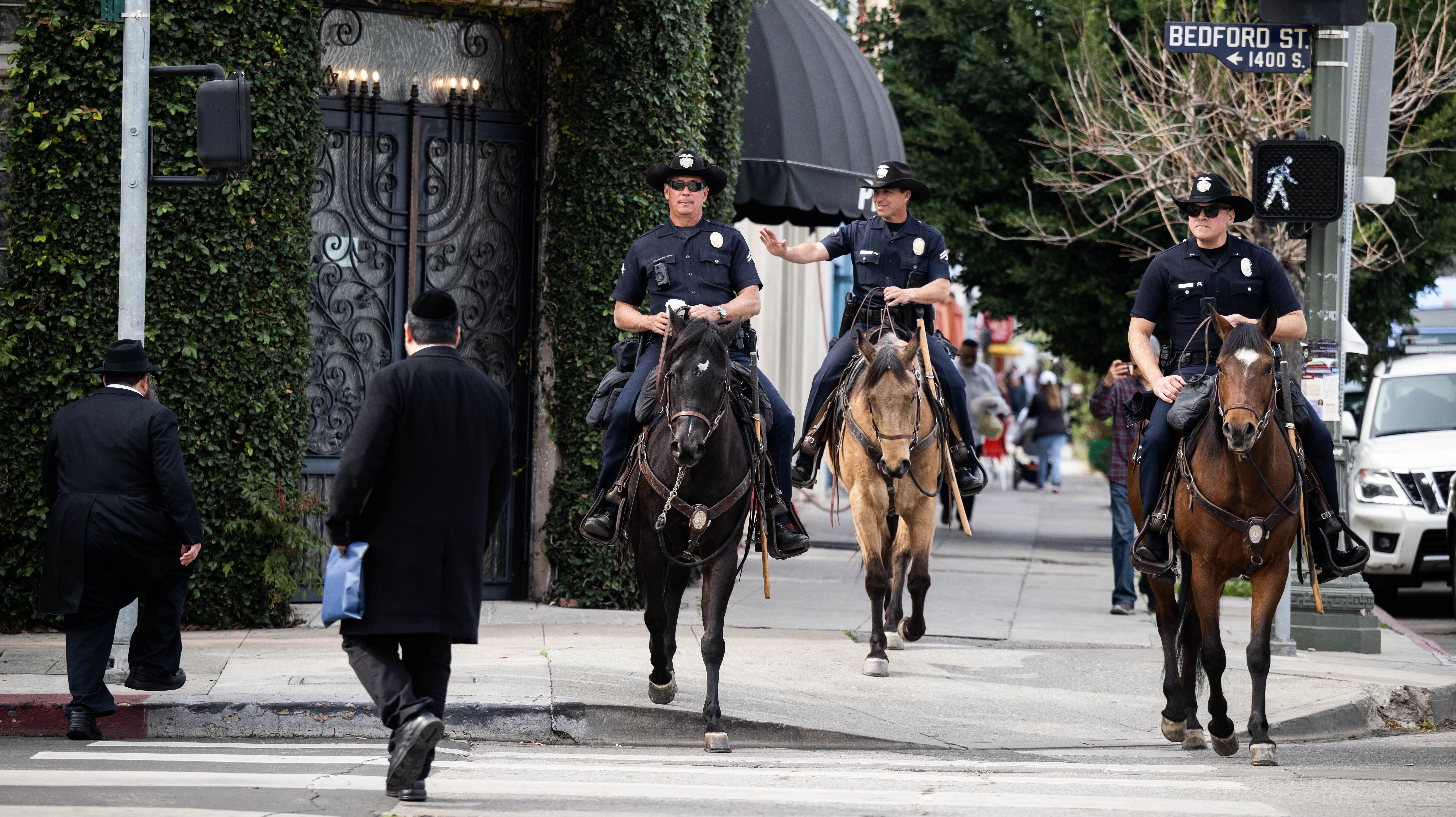Sharp Rise in Antisemitic Attacks in US, Haredi Jews Primary Targets: Report
Study finds dramatic increase in incidents in the United States and other countries, alongside decline in France and UK
The United States saw a sharp rise in antisemitic incidents in 2022 and Haredi (ultra-Orthodox) Jews were the primary targets, according to a new report.
The 22nd annual Antisemitism Worldwide Report was jointly released by the Center for the Study of Contemporary European Jewry at Tel Aviv University and the Anti-Defamation League (ADL) on the eve of Holocaust Remembrance Day.
Visibly identifiable Jews, particularly those who are Haredi, were the main victims of antisemitic assaults in the West, the report states. These attacks include beatings, being spit on, and having objects thrown at them.
The report examined dozens of such instances in a variety of cities with large Jewish populations, including New York and London. New York was reported as having the highest number of assaults in the US, while London saw the largest number of attacks in Europe.
Visibly Jewish individuals are more likely to be the victims of attacks. … There’s a perception that an ultra-Orthodox Jew won’t fight back.
Dr. Carl Yonker, a senior researcher at the Center who led the research on the nature of the antisemitic attacks, told The Media Line that Haredi Jews were targeted for two main reasons.
“Visibly Jewish individuals are more likely to be the victims of attacks,” Yonker said. “There’s something that denotes to a perpetrator that this individual is Jewish. When we were in London, we heard that there’s a perception that an ultra-Orthodox Jew won’t fight back.”
This holiday season, give to:
Truth and understanding
The Media Line's intrepid correspondents are in Israel, Gaza, Lebanon, Syria and Pakistan providing first-person reporting.
They all said they cover it.
We see it.
We report with just one agenda: the truth.


Yonker and his team carried out fieldwork in London, England, focusing on the Stamford Hill neighborhood, which has a large Hasidic community. They interviewed members of the community and heard their stories.
“What shocked me the most was hearing this kind of resignation, that this is one of the results of living in the Diaspora and that you have to live with [antisemitism],” Yonker said. “These attacks are very pedestrian and are not premeditated for the most part, for example getting spit on on the bus, or getting pushed around.”
Yonker said that many members of the community also expressed a sense of frustration at the situation and further believed that reporting such incidents to the authorities would do little to help resolve them.
According to the report, physical attacks on Jews tend to occur primarily in specific areas in major urban centers, such as on the street or on public transportation. The perpetrators’ motivations are not entirely clear in all cases and could be driven by antisemitic beliefs or anti-Israel sentiment, among other things.
Yonker and his team compiled data from several countries and said that the overall situation with regard to antisemitism in 2022 was a “mixed bag.” The US saw a sharp rise in attacks, for instance; however, the UK and France saw a moderate decline.
The ADL recorded 3,697 attacks in the US, marking a sharp increase over the 2,717 incidents in 2021, which was itself a record year for antisemitic assaults. The NYPD registered 261 hate crimes against Jews compared to 214 in 2021, while the LAPD recorded 86 in 2022 in comparison to 79 a year earlier.
One of the reasons for this disturbing trend is the “normalization of crazy conspirations” in American public discourse, the study stated, including the spread of antisemitic propaganda by white supremacists, which has almost tripled since 2021.
In a more positive development, other countries—Germany, Austria, France, the UK, Canada, and Argentina—saw a decline in antisemitic incidents compared to 2021. Germany registered 2,649 such occurrences in 2022 (less than the 3,028 reached in 2021), while France documented 436 incidents compared to 589 in 2021.
“The point of all of this is to get the most data possible so that we can get a clearer picture of what’s happening in each country so that effective policies and steps can be taken to reduce the number of incidents,” Yonker noted. “At the end of the day, the number of incidents is high and that’s unacceptable.”
The fight against antisemitism must include more practical, measurable, and transparent objectives and fewer declarations and cries of ‘Gevald!’
A number of things can be done to quell such trends, according to Prof. Uriya Shavit, head of the Center for the Study of Contemporary European Jewry.
“Our research indicates that effective policing, indictments, and educational campaigns in a small number of urban areas in various Western countries can lead to a significant reduction in the number of violent antisemitic attacks,” Shavit said in a statement that was shared with The Media Line. “The fight against antisemitism must include more practical, measurable, and transparent objectives and fewer declarations and cries of ‘Gevald!’”

